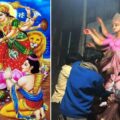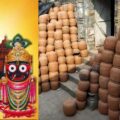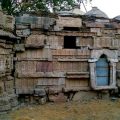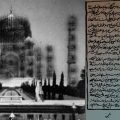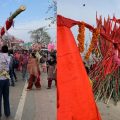Kumortuli: Where Art, Tradition, and Devotion Converge during Mahalaya
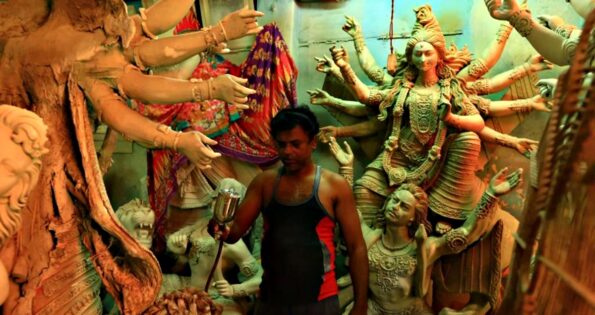
In the heart of Kolkata, amidst the narrow lanes of Kumortuli, there exists a world unlike any other. As Mahalaya approaches, these streets come alive with a flurry of activity, and it’s a time when nostalgia intertwines with emotion.
Stepping into Kumortuli during this season is like stepping into a time portal, transporting you to a bygone era. It is not just about witnessing art in the making; it’s about witnessing the heartbeat of a culture. The skilled artisans, inheritors of centuries-old craftsmanship, pour their heart and soul into shaping clay into divine forms. The artisans collaborate, sharing tips and techniques, their camaraderie echoing through the alleyways. Each sculptor, whether young or old, carries forward a legacy that has been cherished for generations.
The aroma of freshly kneaded clay mingles with the scent of incense, creating a sensory experience that is both earthy and spiritual. The rhythmic tap-tap of sculpting tools resonates through the air, a percussion of dedication to their craft and the goddess herself, working tirelessly, day and night.
The idols, emerging from this sacred crucible, are nothing short of breathtaking. With eyes that seem to hold the secrets of the universe and adorned in resplendent finery, they are a testament to the artisans’ skill and devotion. Each stroke of paint, each piece of jewelry, is added with meticulous care, and it’s as if the goddess herself is being dressed for her annual earthly sojourn.
For those who grew up in Kolkata or have ties to the city, Mahalaya in Kumortuli is a nostalgia. It’s a reminder of childhood visits, of holding your parents’ hand and watching in awe as the goddess came to life before your eyes. In Kumortuli, the days leading to Mahalaya are not just a preparation for a festival; they are a celebration of art, tradition, and devotion, where emotion and nostalgia find a home, and where the divine comes alive through the hands of artisans.
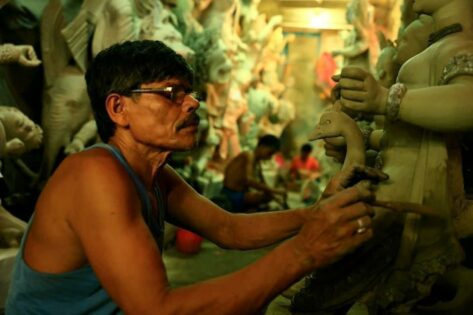
Kumortuli, the Potter’s Quarter of Kolkata, is a place where history and spirituality blend seamlessly. As the auspicious time of Mahalaya approaches, this neighborhood transforms into a bustling hub of creativity and devotion. Kumortuli, meaning “potter locality,” is aptly named, for it is here that talented artisans mold clay into exquisite forms of deities, most notably the goddess Durga, in preparation for the grand festival of Durga Puja.
As one wanders through the labyrinthine lanes of Kumortuli during the Mahalaya season, it’s impossible not to be captivated by the palpable sense of history and culture that envelopes the area. The clay moortis, with their divine countenances and intricate details, are not merely artworks; they are expressions of a rich heritage that has been passed down through generations.
Artisans in Kumortuli are the custodians of a unique craft, honed and refined over centuries. The skills required to create these moortis are not learned in schools but are transmitted from one generation to the next, within families and communities. It’s a tradition where apprentices observe and learn from the experienced hands of their predecessors, fostering a sense of continuity that is awe-inspiring.
Within the workshops, small and large, ancient and modern, the air is thick with the scent of freshly kneaded clay. As the artisans meticulously shape the raw material, their hands move with a grace born of experience. Each sculptor, whether young or old, understands the significance of their role. They know that they are not just crafting moortis; they are bringing the divine to life.
What sets Kumortuli apart is the spirit of collaboration and community that permeates the air. Artisans from various workshops come together to share their knowledge and expertise. Techniques and trade secrets are passed on from one to another, creating an environment of mutual support. This camaraderie is as much a part of the Kumortuli experience as the artistry itself. It’s a reminder that the creation of these moortis is not merely a job; it’s a collective endeavor that binds the community together.
The work in Kumortuli begins long before Mahalaya arrives. The selection of clay, the initial molding, and the drying process take weeks. As the final days leading to the festival approach, the intensity of activity reaches a crescendo. The artisans work tirelessly, often through the night, to ensure that the moortis are ready for their grand unveiling during Durga Puja. The rhythmic tap-tap of sculpting tools becomes a percussion of dedication, a reminder of the unwavering commitment these artisans have to their craft and to the goddess herself.
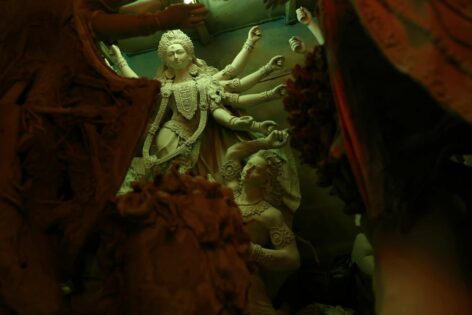
The moortis themselves are a sight to behold. With each passing day, they take on more and more character. The eyes, initially blank voids, are painted to hold the secrets of the universe. The deities are dressed in ornate finery, their garments and jewelry meticulously chosen to enhance their divine presence. Every detail, down to the last stroke of paint, is added with painstaking care, as if the goddess herself were preparing for her annual visit to the mortal realm.
As the moortis near completion, they are carefully lifted and transported to the pandals, the temporary structures erected for Durga Puja. These pandals are the stage for the grand performance that is the festival. The moortis are placed at the center, surrounded by a breathtaking display of artistry and craftsmanship. The pandals themselves are a testament to the creativity of the artisans, with each community striving to outdo the other in creating a unique, awe-inspiring setting for the goddess.
For those who grew up in Kolkata or have ties to the city, Mahalaya in Kumortuli is a nostalgia. It’s a reminder of childhood visits, of holding your parents’ hand and watching in awe as the goddess came to life before your eyes. The memories of those days are etched in the minds of many, and each visit to Kumortuli during Mahalaya rekindles that sense of wonder and excitement.
In Kumortuli, the days leading to Mahalaya are not just a preparation for a festival; they are a celebration of art, tradition, and devotion. Here, emotion and nostalgia find a home, and the divine comes alive through the hands of artisans who are not merely sculptors but the very architects of faith. It’s a place where the past and the present converge, where the spiritual and the artistic intertwine, and where the heartbeats of countless believers resonate with the rhythm of creation.
In the midst of Kumortuli’s narrow lanes, where time seems to stand still during Mahalaya, there is a profound connection between the earthly and the divine. The clay moortis, fashioned with utmost care and devotion, serve as a bridge between the mortal realm and the celestial. As the city of Kolkata prepares to celebrate Durga Puja, it is Kumortuli that remains at its heart, a testament to the enduring power of tradition, art, and faith.
Tomar haath dhorei Maa aashen, a refrain that echoes through the streets of Kumortuli, signifies not just a physical arrival but a spiritual connection. It’s an invitation to the goddess to join the mortal world, to grace it with her presence, and to remind everyone that in Kumortuli, artistry becomes divinity, tradition becomes a celebration, and devotion finds its most profound.
Images clicked by the author.

